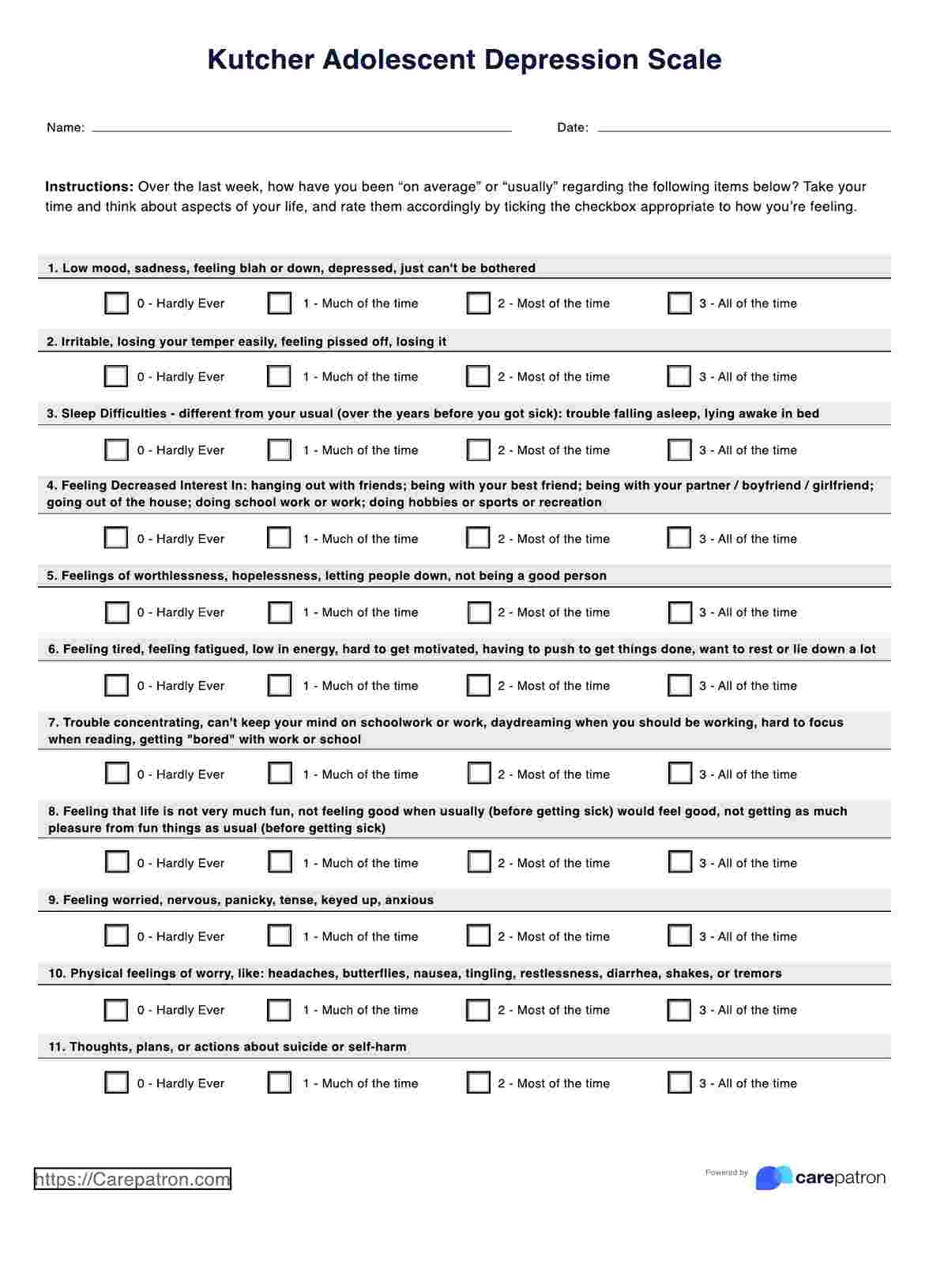It depends because some are self-assessments. Sometimes, psychologists will be observing and evaluate their patients. Based on those, the answers or ratings are subjective, but there are sometimes score ranges that give a semblance of objectivity, just so the psychologist can determine the courses of action they can possibly take to help their clients.

Kutcher Adolescent Depression Scale (KADS-11)
Issue the Kutcher Adolescent Depression Scale to your adolescent client to gauge the severity of their depression. Create an effective treatment plan that addresses the heart of their mental health concerns.
Kutcher Adolescent Depression Scale (KADS-11) Template
Commonly asked questions
For the Kutcher Adolescent Depression Scale (KADS-11), yes, it doesn’t have set score ranges with designations. But for this particular scale, the higher the total score that the adolescent gets, the more likely it is that they have a high or severe level of depression. The lower the score, the more moderate or mild the depression level is.
At the start of your program with your client is often the best time to use this for the first time because you want to gauge the severity of their depression or to see if you need to move forward to have them diagnosed.
You may also reissue this to your client every now and then to establish continuity and monitor how they’re doing, as well as to see if your treatment plan is successful or not (hopefully, it’s working!).
EHR and practice management software
Get started for free
*No credit card required
Free
$0/usd
Unlimited clients
Telehealth
1GB of storage
Client portal text
Automated billing and online payments











